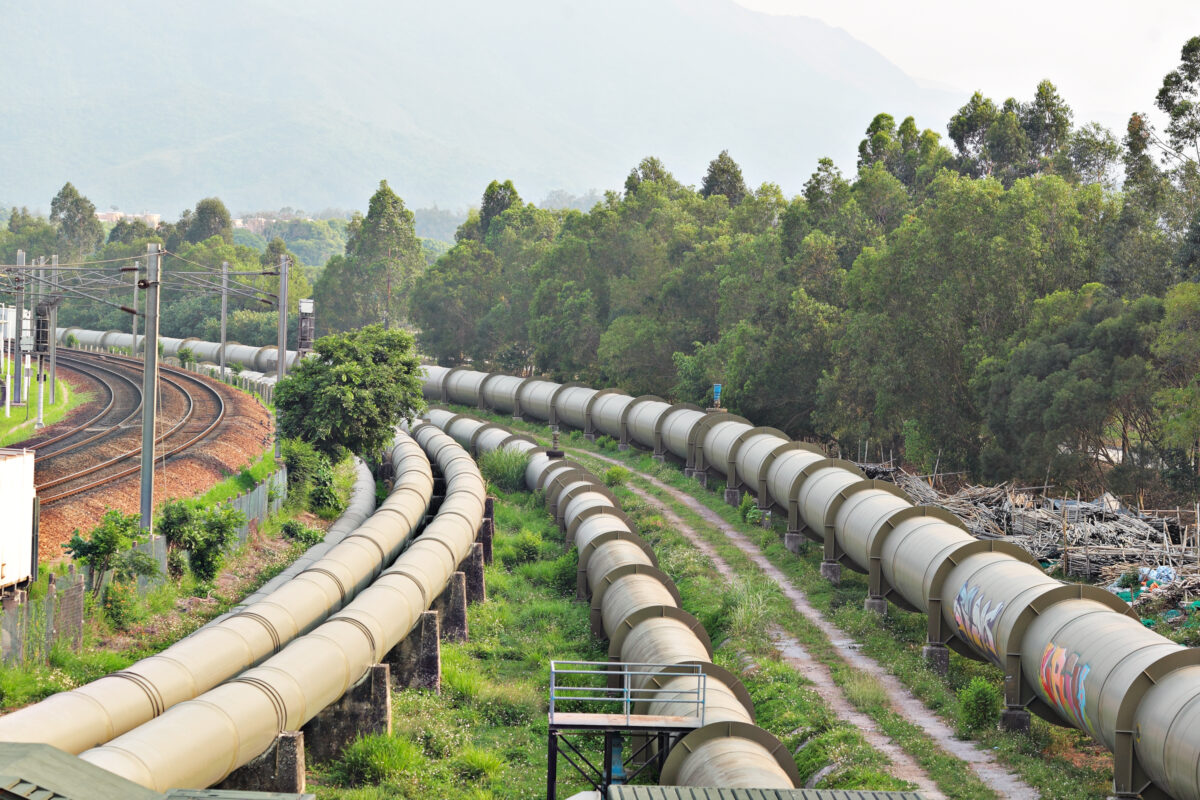Pipeline security is a crucial aspect of national security, and the TSA plays a pivotal role in defining and enforcing guidelines for compliance.
Understanding the nuances of these guidelines is essential for industry professionals, policymakers, and the public.
Key Components of TSA Pipeline Security

Before we go into why you must implement TSA pipeline security guidelines, let’s first look at what it entails.
The TSA Pipeline Security Guidelines outline several crucial components that form the foundation of a robust security infrastructure for pipelines. These components work synergistically to create a comprehensive defense against potential threats.
1. Surveillance Systems
Surveillance systems are pivotal in maintaining real-time awareness along the pipeline network. Place advanced cameras, sensors, and monitoring technologies to cover critical areas. These systems provide continuous monitoring, enabling early detection of suspicious activities or potential security breaches.
Incorporating high-resolution cameras with night vision capabilities ensures visibility in all conditions. Additionally, integrating intelligent video analytics enhances the surveillance system’s efficacy. These analytics can automatically identify unusual patterns or behaviors, triggering immediate alerts for further investigation.
To achieve optimal coverage, Deploy surveillance systems at key points such as entry and exit points, junctions, and vulnerable areas. Regular maintenance and testing of these systems is essential to ensure their reliability and effectiveness in mitigating security risks.
2. Access Control Measures
Controlling and restricting access to critical infrastructure is fundamental to pipeline security. Access control measures ensure that only authorized personnel can enter sensitive areas, minimizing the risk of unauthorized interference.
Biometric authentication, smart card systems, and secure access protocols are integral components of access control. Biometric systems, such as fingerprint or iris scans, add a layer of identity verification, making it challenging for unauthorized individuals to gain access.
Access control measures extend beyond physical entry points, including digital access to control systems.
Robust cybersecurity protocols, including multi-factor authentication and regular security audits, are

implemented to safeguard against cyber threats targeting digital infrastructure.
Regular training programs for personnel emphasize the importance of adherence to access control measures. This human element is critical in ensuring your organization consistently follows security protocols reported promptly.
3. Emergency Response Planning
Preparedness for potential security incidents is paramount in safeguarding pipelines. Emergency response planning involves the development of comprehensive strategies and protocols to address various scenarios, ranging from natural disasters to intentional security breaches.
Pipeline operators work closely with local emergency responders and law enforcement agencies to create effective response plans. These plans include protocols for communication, evacuation procedures, and coordination with relevant authorities. Conduct regular drills and simulations to ensure all stakeholders are well-prepared to execute these plans promptly and coordinately.
Furthermore, integrating technology, such as automated shut-off systems triggered by security alerts, enhances the speed of response to mitigate potential damages.

The effectiveness of emergency response plans is regularly evaluated and updated based on lessons learned from drills and real-world incidents.
In summary, the key components of TSA Pipeline Security Guidelines – surveillance systems, access control measures, and emergency response planning – collectively establish a multi-layered defense strategy, ensuring the resilience and security of pipeline infrastructure against diverse threats.
Importance of TSA Guidelines

The Transportation Security Administration (TSA) guidelines for pipeline security hold immense significance in safeguarding critical infrastructure and maintaining the nation’s overall security. Understanding the profound importance of these guidelines is essential for all stakeholders involved, from industry professionals to policymakers and the public.
1. Ensuring National Security
TSA guidelines are committed to bolstering the nation’s security. Pipelines serve as vital arteries for the transportation of energy resources, and any compromise to their integrity could have far-reaching consequences.
By adhering to TSA guidelines, pipeline operators actively contribute to the collective effort of fortifying national security.
Terrorism, cyber threats, and other malicious activities pose constant challenges to the safety of pipeline networks. TSA guidelines are designed to address these evolving threats, providing a dynamic framework that adapts to the changing landscape of security risks. Compliance with these guidelines becomes a proactive measure, deterring potential threats and ensuring the uninterrupted flow of critical resources.
2. Mitigating Potential Threats
Compliance with TSA guidelines is not merely a regulatory requirement but a strategic approach to identifying and mitigating potential threats before they escalate. The guidelines are designed to cover a spectrum of security risks, from physical attacks to sophisticated cyber intrusions.
Pipeline operators create a robust defense system by implementing and adhering to the recommended security measures. This proactive stance is essential in identifying vulnerabilities, deterring potential threats, and responding swiftly to security incidents. The overarching goal is to minimize the likelihood of disruptions and protect the vital services that pipelines provide to communities and industries.
3. Regulatory Framework for Resilience
TSA guidelines serve as a comprehensive regulatory framework that guides the pipeline industry toward resilience. These regulations are not static; they evolve in response to emerging threats and technological advancements. Staying in compliance requires a commitment to continuous improvement and adaptation to the latest security standards set forth by the TSA.
This regulatory framework provides a structured approach for pipeline operators to assess, enhance, and validate security measures. It sets the baseline for industry-wide best practices, fostering a culture of security-conscious operations. The collaborative effort to meet and exceed these guidelines strengthens the overall security posture of the pipeline infrastructure.
4. Public Confidence and Trust
The transparency and commitment demonstrated through adherence to TSA guidelines contribute to building public confidence and trust. Communities that live near pipelines are keenly aware of the importance of safety and security. Knowing pipeline operators follow rigorous TSA guidelines reassures the public that their well-being is a top priority.

Public confidence is not only a social benefit but also a critical factor in ensuring the cooperation and support of communities. In the event of an incident, transparent adherence to TSA guidelines demonstrates accountability and a commitment to addressing and rectifying issues promptly. This, in turn, strengthens the partnership between pipeline operators and the communities they serve.
Implement TSA Guidelines with FAT FINGER

FAT FINGER, a cutting-edge platform, offers a comprehensive solution for efficiently implementing and adhering to TSA guidelines. Here’s how oil and gas companies can leverage FAT FINGER to enhance their pipeline security:
Digital Compliance Checklists: Replace traditional paper-based checklists with digital ones through the FAT FINGER platform. Ensure that all TSA guidelines are systematically incorporated into these checklists, providing a user-friendly interface for staff to follow and complete.
Real-time Surveillance Integration: Integrate FAT FINGER with existing surveillance systems to enable real-time monitoring and reporting. This integration ensures you promptly identify deviations from TSA guidelines, allowing immediate corrective actions.
Access Control Automation: Utilize FAT FINGER to automate access control processes. The platform can manage and monitor access permissions, ensuring only authorized personnel can enter sensitive areas.
Emergency Response Plan Digitization:
Digitize emergency response plans within the FAT FINGER platform. This ensures that all stakeholders have quick access to up-to-date protocols, and the platform can facilitate communication and coordination during emergencies.
Training and Awareness Modules: Ensure personnel are well-versed in TSA guidelines through engaging and accessible digital content, enhancing their understanding and compliance.
Take the Next Step:
Explore FAT FINGER: Visit FAT FINGER and learn how the workflow digitization builder can meet the specific needs of your pipeline operations.
Want to witness FAT FINGER in action? Book a Demo or sign up for a free trial.


